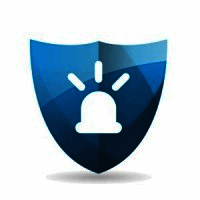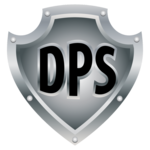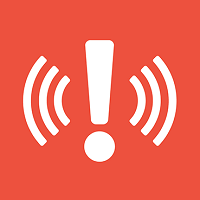Description

10-8 Systems

Omnigo
Comprehensive Overview: 10-8 Systems vs Omnigo
Overview of 10-8 Systems and Omnigo
a) Primary Functions and Target Markets
10-8 Systems:
- Primary Functions: 10-8 Systems primarily offers a cloud-based Computer-Aided Dispatch (CAD) solution designed for public safety and emergency services. Its functionalities include dispatching, mobile data terminal access, records management, and reporting.
- Target Markets: The main market for 10-8 Systems includes small to mid-sized law enforcement agencies, fire departments, EMS services, and private security companies. Its solutions are tailored to be cost-effective and scalable, making them ideal for smaller organizations with limited budgets.
Omnigo Software:
- Primary Functions: Omnigo provides comprehensive public safety, incident reporting, and security management software. Its product suite includes CAD, records management systems (RMS), mobile patrol management, and Clery Act compliance tools for campuses.
- Target Markets: Omnigo serves a wide array of sectors including law enforcement, higher education, healthcare, and corporate security. It's particularly known for serving campus safety needs, making it popular among universities and healthcare facilities.
b) Market Share and User Base
-
10-8 Systems: As a niche player focusing on smaller agencies, 10-8 Systems does not dominate the market in terms of share but has carved out a dedicated user base among smaller public safety organizations looking for cost-effective and easy-to-use solutions.
-
Omnigo: Omnigo enjoys a larger market presence, particularly in sectors like campus and healthcare security. Its broader product suite and reputation have allowed it to secure a larger user base across multiple industries. The company is well-regarded and holds a significant portion of the market share in its targeted sectors, especially in higher education and healthcare.
c) Key Differentiating Factors
- Scalability and Cost:
- 10-8 Systems is favored for its affordability and scalability, which suits smaller agencies needing basic functionalities without high costs.
- Omnigo, although more expensive, provides a comprehensive suite of tools that cater to larger organizations with more complex needs.
- Specialization:
- 10-8 Systems focuses on simplicity and ease of use, which is attractive to smaller agencies without dedicated IT staff.
- Omnigo excels in specialized areas like campus safety and compliance (e.g., Clery Act), offering tailored solutions for these industries.
- Integration and Features:
- Omnigo offers more extensive integration capabilities with other security systems and more robust analytics and reporting features. This makes it a preferred choice for organizations needing integrated security solutions.
- Customer Base and Focus:
- Omnigo supports a diverse customer base that includes healthcare and corporate clients, which is less common for 10-8 Systems. Omnigo's diverse offerings allow it to meet the specific needs of various sectors beyond traditional public safety.
Overall, the choice between 10-8 Systems and Omnigo often comes down to the specific needs and budget of the organization, with 10-8 Systems serving smaller agencies looking for basic and scalable solutions, and Omnigo appealing to larger and more diverse organizations requiring comprehensive and integrated safety and security management tools.
Contact Info

Year founded :
Not Available
Not Available
Not Available
Not Available
Not Available

Year founded :
2017
Not Available
Not Available
United States
Not Available
Feature Similarity Breakdown: 10-8 Systems, Omnigo
As of my last update, both 10-8 Systems and Omnigo are known for offering software solutions primarily aimed at public safety, including law enforcement and emergency services. Here is a feature similarity breakdown for both systems:
a) Core Features in Common
-
Computer-Aided Dispatch (CAD)
- Both systems offer CAD solutions to assist with the management and dispatching of emergency services.
-
Records Management System (RMS)
- They provide RMS functionalities that allow agencies to store, manage, and retrieve records efficiently.
-
Mobile Access
- Mobile capabilities are present in both products, enabling users to access critical information and update statuses on the go.
-
Reporting and Analytics
- Both systems offer tools for comprehensive reporting and analytics, helping agencies assess performance and outcomes.
-
User Management
- Each platform includes robust features for managing user access and roles within the system.
b) User Interface Comparison
-
10-8 Systems
- 10-8 Systems tends to focus on a user-friendly and straightforward interface designed to streamline operations for smaller to mid-sized agencies. It often emphasizes ease of use, which is beneficial for organizations with limited technical support.
-
Omnigo
- Omnigo usually provides a more comprehensive interface, often slightly more complex due to its focus on serving a broader range of agency sizes, including larger, more complex organizations. It offers more customization options, which can cater to specialized needs.
c) Unique Features
-
10-8 Systems
- Simplicity and Affordability: Known for being more cost-effective and simpler to deploy and use, which is particularly advantageous for smaller agencies with limited budgets.
-
Omnigo
- Integration Capabilities: Omnigo often stands out with its high level of integration capability, both with third-party systems and other modules within the public safety ecosystem.
- Advanced Analytics: Offers more advanced analytics and insights tools, which can appeal to larger agencies with specific data analysis needs.
In conclusion, both systems share core functionalities vital for public safety operations, but they differ in their approach to user interface and unique features. 10-8 Systems is generally appreciated for its simplicity and affordability, making it suitable for smaller agencies, whereas Omnigo's integration capabilities and advanced analytics provide added value to larger enterprises. For specific up-to-date details, especially considering any new releases or updates post-2023, reaching out directly to the vendors would be ideal.
Features

Not Available

Not Available
Best Fit Use Cases: 10-8 Systems, Omnigo
10-8 Systems
10-8 Systems is typically known for its cloud-based dispatch and reporting solutions suitable for public safety and emergency management. Here’s how it fits into different use cases:
a) Best Fit Use Cases for 10-8 Systems:
-
Small to Medium-Sized Public Safety Organizations: Agencies such as local police departments, fire departments, and EMS services that require an affordable yet comprehensive dispatch and reporting solution would benefit most from 10-8 Systems. Its cloud-based nature makes it accessible without the need for extensive IT infrastructure.
-
Volunteer and Rural Emergency Services: Organizations with limited resources or non-full-time operational staff, such as volunteer fire departments or rural emergency services, can use 10-8 Systems to streamline their operations effectively.
-
Event Management: For events that require temporary dispatch and monitoring capabilities—such as festivals, parades, or concerts—10-8 Systems can serve as a flexible solution to ensure safety and communication without needing permanent installations.
Omnigo
Omnigo is widely recognized for its comprehensive suite of public safety, incident reporting, and security management solutions. It is geared towards a range of industries beyond traditional emergency services:
b) Preferred Use Cases for Omnigo:
-
Larger Municipal and Campus Police Departments: Omnigo's robust functionalities make it suitable for larger, complex organizations like city police departments and university campus safety agencies that need detailed incident management and reporting tools.
-
Healthcare Facilities: Hospitals and healthcare systems that require strict security and compliance management benefit from Omnigo’s ability to integrate with health information systems and comply with regulatory standards.
-
Education and Corporate Campuses: Both educational institutions and large corporate campuses needing enhanced security measures, including incident response and prevention, would find Omnigo's comprehensive tools invaluable.
-
Hospitality and Retail Sectors: Businesses in the hospitality and retail sectors can use Omnigo for security management, to monitor incidents, manage risks, and ensure the safety of guests and employees.
Differentiation by Industry Verticals and Company Size
-
10-8 Systems tends to cater more to smaller or medium-sized entities that need a cost-effective and cloud-based solution without heavy IT requirements. This makes it suitable for industries where public safety coordination is essential but resource availability is limited.
-
Omnigo, on the other hand, provides a more extensive range of features, making it better suited for larger organizations and industries with complex security and compliance requirements. These include healthcare, education, and corporate environments where integration with broader operational systems is necessary.
In summary, the selection between 10-8 Systems and Omnigo hinges largely on the organization's size, complexity, and specific industry requirements, with 10-8 Systems being more budget-friendly and accessible and Omnigo focusing on a deeper range of functionalities and integrations.
Pricing

Pricing Not Available

Pricing Not Available
Metrics History
Metrics History
Comparing undefined across companies
Conclusion & Final Verdict: 10-8 Systems vs Omnigo
To provide a comprehensive conclusion and final verdict on 10-8 Systems and Omnigo, it is essential to evaluate each product based on a set of critical factors such as features, pricing, user experience, customer support, and scalability. While specific details on these products can vary, I will attempt to outline a general comparison based on common industry knowledge and traits typical to similar products.
a) Best Overall Value
10-8 Systems generally emerges as a strong contender for best overall value, particularly for small to medium-sized agencies looking for cost-effective and straightforward solutions. Its competitive pricing model and sufficient feature set suitable for smaller operations make it a potentially better choice for those with budget constraints.
Omnigo, on the other hand, often provides a more comprehensive suite of features and tools that can cater to larger organizations or those requiring more intricate functionalities. Organizations needing advanced integrations and robust reporting capabilities might find the increased investment worthwhile.
b) Pros and Cons
10-8 Systems:
-
Pros:
- Cost-effective; attractive for smaller agencies with limited budgets.
- User-friendly interface; easy to set up and use, minimizing training time.
- Reliable basic features that cover the essential needs of law enforcement agencies.
-
Cons:
- Limited advanced features; may not be suitable for large agencies with complex requirements.
- Scalability issues; rapid growth could necessitate upgrading to more robust systems.
- Potential limitations in customer support for higher-tier needs.
Omnigo:
-
Pros:
- Comprehensive feature set; suited for larger organizations with complex operational needs.
- Excellent scalability; can grow alongside organizational requirements.
- Strong emphasis on integration capabilities and reporting functionalities.
-
Cons:
- Higher cost; could be prohibitive for smaller agencies or those with tight budgets.
- Complexity; may require more extensive initial training and setup.
- Potentially more overwhelming for users who need only basic functionalities.
c) Specific Recommendations
-
For Small Agencies: If your organization is small and primarily needs a cost-effective solution to handle basic needs like incident reporting and records management, then 10-8 Systems might be the better choice. Its user-friendly design and cost-effectiveness can provide exactly what you need without unnecessary complexity.
-
For Larger Agencies: If your organization demands a comprehensive solution that can handle complex integrations, extensive data reporting, and robust scalability, Omnigo might be the more suitable option. Despite its higher cost, it offers functionalities that can grow with your agency and provide greater long-term utility.
-
Decision Factors: When deciding between these two, consider conducting a detailed needs assessment for your organization's specific requirements and constraints. This includes evaluating the budget, the scale of operations, current and future feature requirements, and the available IT support for implementation and maintenance.
Ultimately, the best product choice depends on aligning the specific needs of your agency with what each system offers, considering both present demands and future growth potential.
Add to compare



